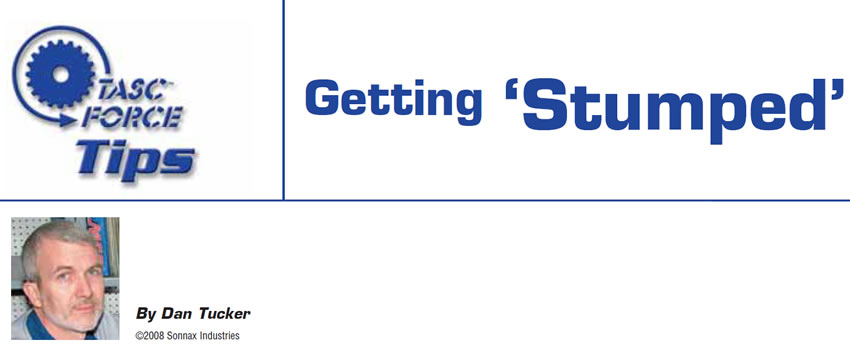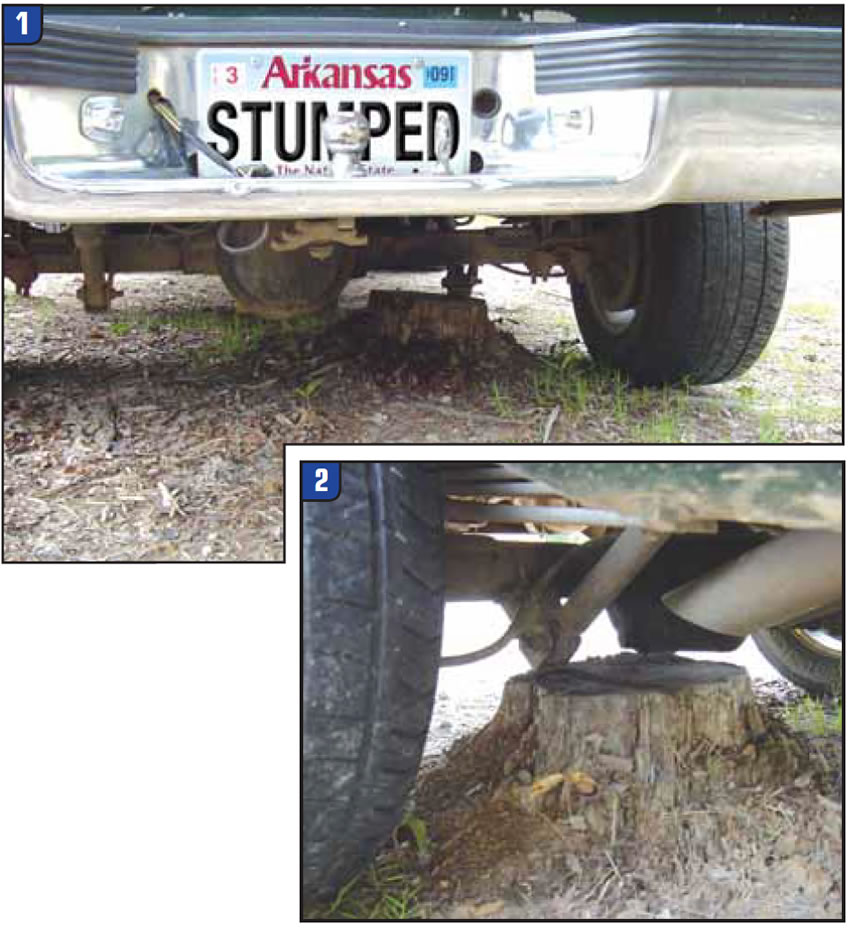
TASC Force Tips
- Author: Dan Tucker
We are in a business that is really going to test us over the next few years. The new technology of the networking electronics and the introduction of hybrids are going to be some exciting challenges for us in the future. We also have multiple new transmissions coming out every year. The days of a transmission, such as the 4L60-E, being in production for more than a decade could be gone.
With the uncertain fuel prices we have to expect change. Anytime we have change we have to be ready for troubleshooting new problems and accept the possibility that some of these new jobs are just going to leave us stumped from time to time. It is part of the business and we might as well accept it. The good part about running into a problem, then struggling to get it fixed, is that most of the time you become a better technician through the process.
Here is a real-life problem that our shop faced just a short time back. As fate would have it I was at home relaxing on a Sunday afternoon when the phone rang. My wife answered the phone and I could see in her eyes that she couldn’t hand this call off to me quickly enough. I could hear a lady on the other end doing anything but talking nicely. My wife was just apologizing as she ‘punted’ the call to me. This is when you get that bad feeling in your stomach and you can see your nice Sunday afternoon has taken a turn for the worse.
I took the phone and asked what the problem was. The lady on the other end was upset and wanted me to fix her son’s truck right now. The problem vehicle was a 1997 Chevrolet 2WD with a 4L60-E in it. We had rebuilt the transmission about six months before. She explained that he pulled up in the driveway and it was fine. Then he got in it to back out and it backed up a few feet and made a pop noise and quit. Now it wouldn’t go forward or reverse. After several minutes of my comforting the lady she calmed down enough to accept that we would have to get it to our shop to see what was wrong. I explained that because it was Sunday and the vehicle was safe in her driveway, we should wait until Monday and I would send a wrecker over and have it towed to the shop for repair.
I got to work Monday and at 8:00 she called and was chewing me out and demanded that the vehicle be fixed NOW! Once more I tried to calm her down, get the address and tell her we would send a wrecker over in just a few minutes. The lady left the key in the seat and went to work, thank the Lord. I called a wrecker and got them on the way.
Next I got to thinking on what could be wrong. A pop and then it quit. My mind was racing. It was a really routine job. A 4L60-E, so it should be easy to troubleshoot. It could be a broken pump gear, bad converter, broken planet etc. My mind was preparing to try to do a NASCAR repair once this truck got to the shop so maybe this poor customer could relax.
About 30 minutes later I got a call from the wrecker driver and he asked to talk to me. “This is scary; now what went wrong?” I was thinking. The wrecker driver told me he was “stumped.” He explained to me that the vehicle was in a position where he couldn’t get it loaded. Then he explained that the truck wouldn’t roll, as it was hung up – you got it, on a STUMP (see figures 1 and 2)!

It was now all falling into place. I asked the driver whether any of the wheels were off the ground, and he turned the right rear to verify that, sure enough, this 1997 Chevy truck that ruined my Sunday afternoon was “airborne” on a stump. The wrecker service didn’t have a jack and was afraid of doing damage by pulling it off the stump so he left, I’m sure laughing about the whole ordeal.
I called the customer at work and explained what had happened and she again got mad, as she couldn’t believe it, and denied there was even a stump in the driveway. I could see she was thinking we were trying to “worm” our way out of warranting the vehicle. We were buried in work so I decided to send the secretary over and take a few photos for future reference and to verify the wrecker driver’s findings.
Once I saw the photos I called her back and explained to her that she needed tell her son to jack it up and put a block of wood under the wheel and drive it off. About an hour later she called back, still not happy, but she said her son did as I said and they didn’t think anything was wrong with the transmission anymore.
I know this is a long and sort of elementary problem, but if a routine vehicle that we are familiar with can cause heartaches like this, we need to get ready for the future by gaining all the knowledge and training we can. Let’s try to avoid the “stumps.”

Dan Tucker is owner of Tucker’s Transmission in Pine Bluff, Ark., and a member of the TASC Force (Technical Automotive Specialties Committee), a group of recognized industry technical specialists, transmission rebuilders and Sonnax Industries Inc. technicians.













